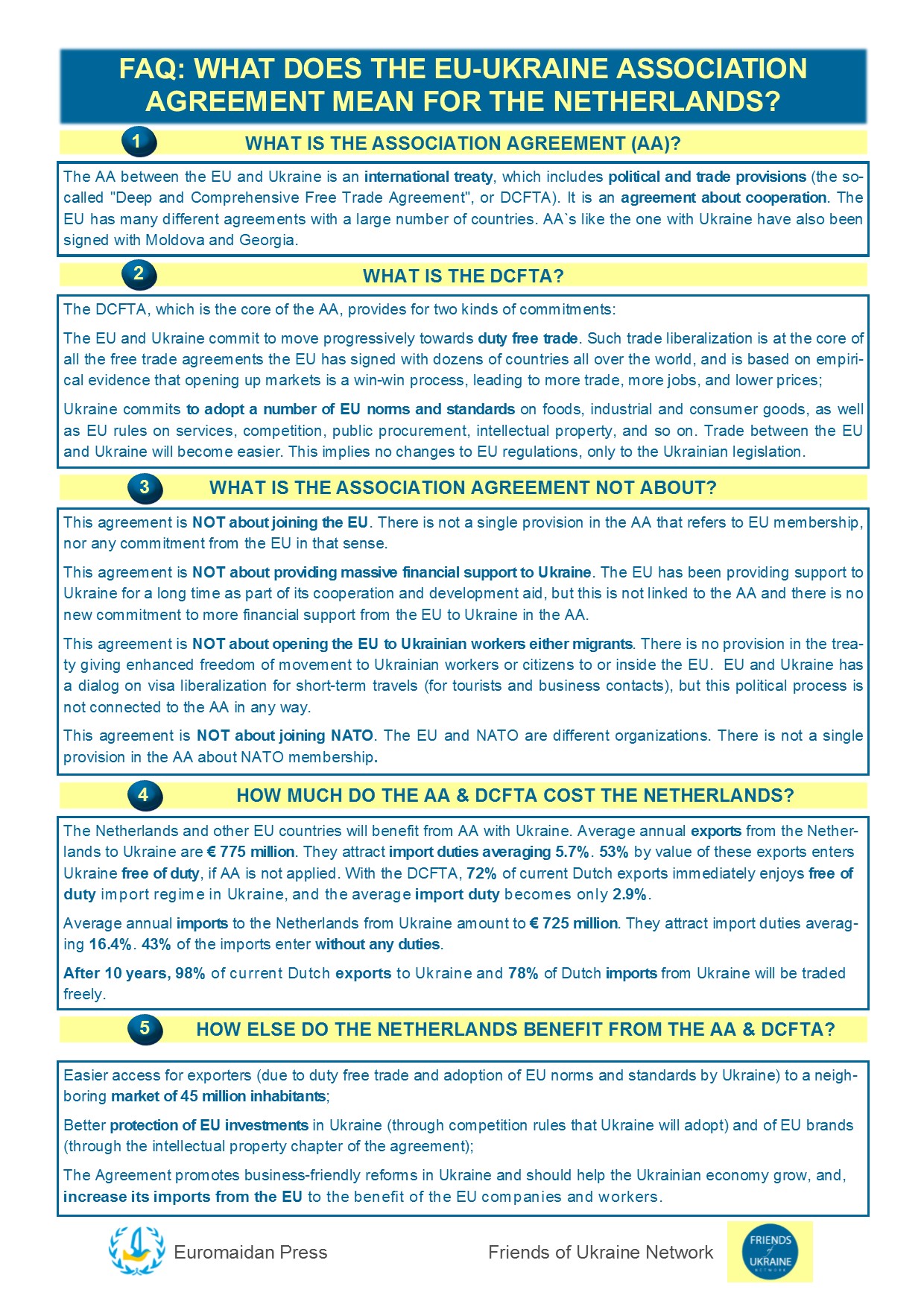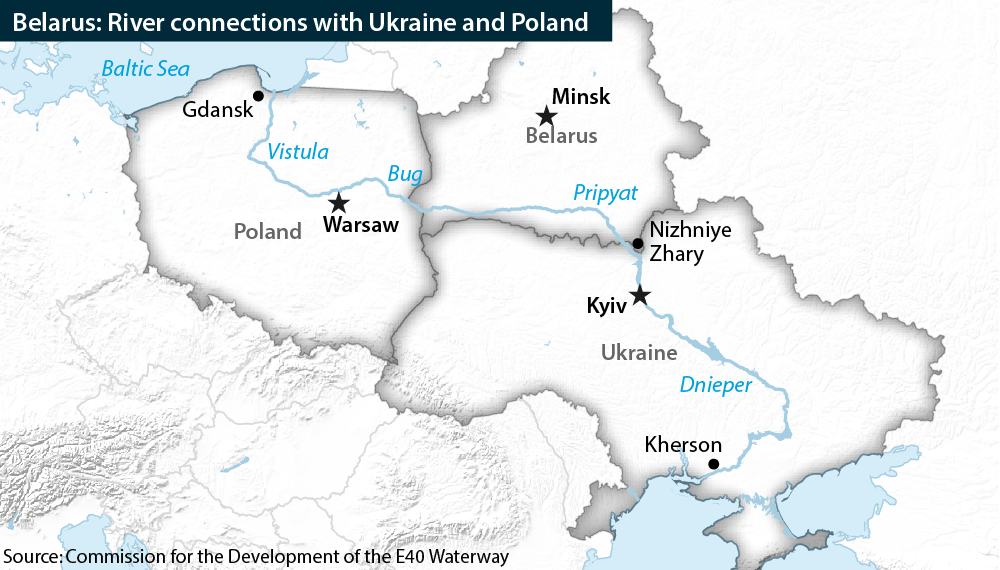Background of the EU-Ukraine Association Agreement
In 2014 the European Union and Ukraine signed an Association Agreement (AA) that established the base for development of EU-Ukraine political and economic relationships. After signing the political chapters of the EU-Ukraine Association Agreement at the EU Summit of 21 March 2014, both parties signed the remaining sections of the Association Agreement on 27 June 2014. The Association Agreement will enter into force once all EU Member States, in addition to Ukraine, have ratified it.
Provisional application of important parts of the Association Agreement began on 1 November 2014: on the respect for human rights, fundamental freedoms and rule of law; political dialogue and reform; justice, freedom and security; economic cooperation and cooperation in sectors like environment, transport and agriculture; financial cooperation. One of the main AA provisions is the one for a Deep and Comprehensive Free Trade Area (DCFTA). The DCFTA part of the Association Agreement entered into force on January 1, 2016.
At the moment all the 28 members of the European Union have already ratified the AA. However, the procedure of ratification is paused until an advisory referendum will be held in the Netherlands on April 6, 2016.

What is the Association Agreement about?
The AA is the first agreement based on political association between the EU and any of the Eastern Partnership countries. The AA between the EU and Ukraine is an international treaty, which includes political and trade provisions. It is an agreement about cooperation. The EU has many different agreements with a large number of countries. AA’s like the one with Ukraine have also been signed with Moldova and Georgia.
The DCFTA, which is the core of the AA, provides for two kinds of commitments:
- The EU and Ukraine commit to move progressively towards duty free trade. Such trade liberalization is at the core of all the free trade agreements the EU has signed with dozens of countries all over the world, and is based on empirical evidence that opening up markets is a win-win process, leading to more trade, more jobs, and lower prices;
- Ukraine commits to adopt a number of EU norms and standards on foods, industrial and consumer goods, as well as EU rules on services, competition, public procurement, intellectual property, and so on. Trade between the EU and Ukraine will become easier. This implies no changes to EU regulations, only to the Ukrainian legislation. Ukraine will be obliged to adopt EU rules and standards.
What is the Association Agreement NOT about?
There exists a number of stereotypes about the AA. They refer joining the EU and NATO, providing financial support to Ukraine, or opening EU`s borders for Ukrainian migrants. However, the AA does not cover cover these spheres, namely:
- This agreement is NOT about joining the EU. There is not a single provision in the AA that refers to EU membership, nor any commitment from the EU in that sense.
- This agreement is NOT about providing massive financial support to Ukraine. The EU has been providing support to Ukraine for a long time as part of its cooperation and development aid, but this is not linked to the AA and there is no new commitment to more financial support from the EU to Ukraine in the AA.
- This agreement is NOT about opening the EU to Ukrainian workers either migrants. There is no provision in the treaty giving enhanced freedom of movement to Ukrainian workers or citizens to or inside the EU. EU and Ukraine has a dialog on visa liberalization for short-term travels (for tourists and business contacts), but this political process is not connected to the AA in any way.
- This agreement is NOT about joining NATO. The EU and NATO are different organizations. There is not a single provision in the AA about NATO membership.
How the EU countries will benefit from the Association Agreement
The Netherlands and other EU countries will benefit from the AA with Ukraine. Average annual exports from the Netherlands to Ukraine are € 775 million. They attract import duties averaging 5.7%. 53% by value of these exports enters Ukraine free of duty, if AA is not applied. With DCFTA, 72% of current Dutch exports immediately enjoys free of duty import regime in Ukraine, and the average import duty becomes only 2.9%. Average annual imports to the Netherlands from Ukraine amount to € 725 million. They attract import duties averaging 16.4%. 43% of the imports enter without any duties. After 10 years, 98% of current Dutch exports to Ukraine and 78% of Dutch imports from Ukraine will be traded freely.
The other benefits from the AA are:
- Easier access for exporters (due to duty free trade and the adoption of EU norms and standards by Ukraine ) to a neighboring market of 45 million inhabitants;
- Better protection of EU investments in Ukraine (through competition rules that Ukraine will adopt) and of EU brands (through the intellectual property chapter of the agreement);
- The Agreement promotes business-friendly reforms in Ukraine and should help the Ukrainian economy grow, and, increase its imports from the EU to the benefit of the EU companies and workers.






